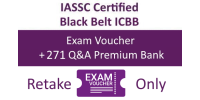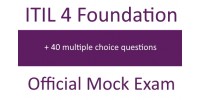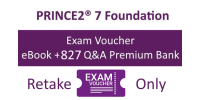What are the potential benefits of adopting Agile methods in projects and programmes?
Agility gives organizations the ability to prioritize strategically: chunking work and goals into time frames that are long enough to develop something of value but short enough to reverse out if necessary. Agile methods mean you can reprioritize or even pause initiatives completely, giving you greater ability to respond to market and business needs.
However, despite the benefits of Agile methods there is also value in creating so-called hybrid working in change initiatives.
Taking a hybrid approach to projects and programmes
While Agile for “Agilistas” is literally a way of life, there is still a need for longer-established project management methods like PRINCE2.
For example, a more “waterfall” approach tends to work better if you’re dealing with large-scale Government contracts. In the UK at least, it’s often a contractual requirement to use the PRINCE2 approach and people qualified in it to deliver Government projects.
However, a mainly-waterfall-driven organization operating with ad-hoc Agile pockets of excellence, e.g. in digital transformation, can work well with the business need determining the most appropriate methodology/approach to utilize.
The challenge comes when an organization has several initiatives running, some using Agile methods and others deploying PRINCE2 or a mixture of both – i.e. hybrid.
So, how do you manage hybrid ways of working in the same organization?
New ways of working and delivering benefits
One approach is to plan and deliver in quarterly increments of a longer-range, multi-year roadmap for change, but with a more traditionally waterfall governance structured overlaid.
This may include a steering group to agree strategic priorities and release investment each quarter, and with a programme board focused on the delivery plan: managing resource, costs, quality, risk and scope on a monthly cycle.
In this way, organizations are able to adopt a standardized and repeatable governance structure across its portfolio regardless of the approach of individual initiatives.
Key challenges in adopting a hybrid approach are in (1) reaching tipping point where the organization’s innovators, early adopters and early majority know enough to see the approach will work and that it’s worth doing, and (2) in managing disruption to delivery of initiatives in-flight when transitioning to the new model.
Developing skills and knowledge for hybrid project and programmes
When moving to Agile or hybrid working models, some senior managers imagine this will happen like the flick of a switch. Unfortunately, it doesn’t.
Instead, companies need to start with knowledge and invest in training key staff in agile approaches along with providing in-house coaches. After all, we can’t lead what we don’t understand!
People are then more likely to see the value in the model the business is moving to, be able to contextualise it for the organisation, and recognize that their employer is investing in their skills, development and helping them to play a part in the organization’s future.
Ultimately, the right mindset and culture needs to be put in place and the concept of being a learning organization in which everyone strives to be high performing.
And this needs to be demonstrated by people in leadership roles. For example, as Transformation Programme Director, I need to assume the attitude of being a learner, to understand the new change model we’re moving to and be a role model for a relentless learning mindset and culture, characteristic of high-performing teams.
Scaling up Agile in an organization
Often, Agile-working initiatives start small, for example with a discreet Agile team working on a digital product.
Then, rather than attempting to adopt Agile methods wholesale, you can road test the approach, prove what works, learn from experience and improve/adapt as you go. Not only does this give the project team and senior management confidence that the approach will work, it creates a repeatable model to trial on other initiatives.
So, it becomes an evolution rather than a “big bang” approach.
If you get it right, it creates empowerment and will be good for staff morale. However, you also need to manage the risk that the organization’s appetite is stimulated before it’s really ready, and before senior leadership is confident that an Agile approach is valid.
The management writer, Stephen Covey, refers to the idea of “sharpening the saw”:investing in yourself, learning new skills, staying sharp and honing your practice. To thrive in an Agile or hybrid workplace, these things are essential.
Source: https://www.axelos.com/resource-hub | Author: Martin Stretton – NFER








